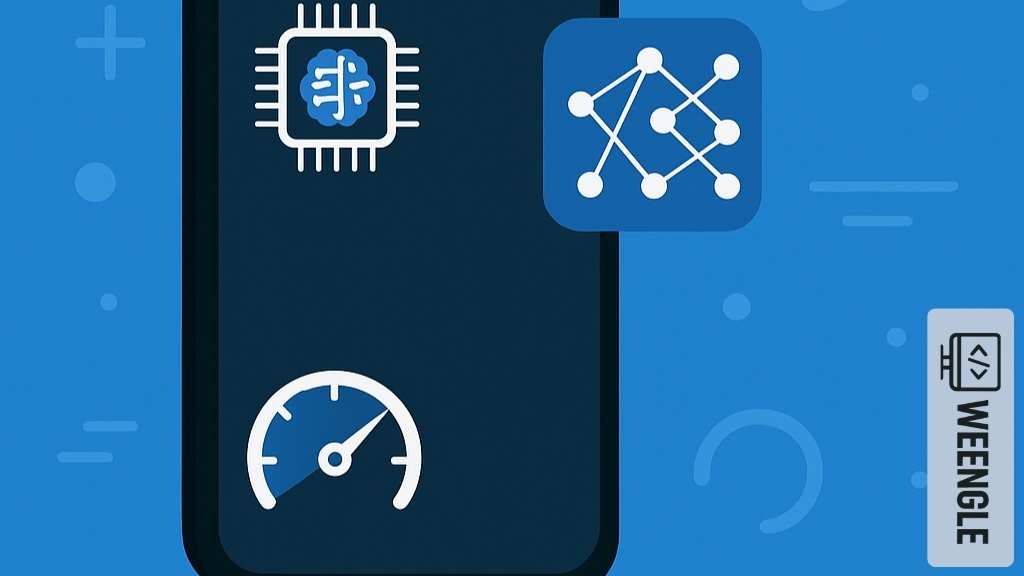Why Lightweight ML Models Matter in Mobile Development?
As mobile applications grow smarter, the need for integrating machine learning directly into devices with limited computing resources, like smartphones, tablets, or IoT devices, is rapidly increasing. In this article, we’ll explore lightweight machine learning models designed for mobile app development and how they can boost performance while preserving battery life.
What Are Lightweight Machine Learning Models?
Lightweight ML models are optimized versions of standard machine learning models intended for mobile and edge devices. These models are:
- Smaller in size (typically under 10MB)
- Capable of real-time inference
- Energy-efficient and low-latency
- Designed for offline operation
Popular examples include MobileNet, TinyML models, TensorFlow Lite, and ONNX Runtime Mobile.
Top Lightweight ML Frameworks for Mobile Apps
1. TensorFlow Lite (TFLite)
- Optimized for Android and iOS edge devices
- Supports model quantization to reduce size and computation
- Best for image recognition, NLP, and custom vision models
2. Core ML (Apple)
- Apple’s native framework for on-device machine learning
- Converts models from TensorFlow, PyTorch, Keras, XGBoost, etc.
- Best for iOS apps and Siri-like functionality
3. ONNX Runtime Mobile
- Cross-platform ML runtime developed by Microsoft
- Supports model conversion from major frameworks
- Lightweight deployment on Android and iOS
Benefits of Using Lightweight ML Models
- Faster load times and real-time processing
- Works offline – no need for cloud connectivity
- Improved data privacy – local inference keeps user data safe
- Lower operational costs – fewer API calls and server dependencies
Common Use Cases in Mobile Apps
- Face detection and facial recognition
- Speech-to-text transcription
- Predictive text and keyboard AI
- Personalized recommendations
- Posture or fitness tracking
- Augmented reality enhancements
How to Optimize ML Models for Mobile Deployment
- Model Quantization: Convert high-precision models (float32) to low-precision (int8)
- Pruning: Remove unnecessary model weights
- Transfer Learning: Fine-tune smaller base models
- Hardware Acceleration: Use GPU/DSP/Neural Engine for better inference speed
Real-World Example: AI in a Fitness Tracker App
Using TensorFlow Lite and MobileNet, a fitness app can perform real-time posture correction from a user’s camera, entirely offline. It enhances privacy and delivers instant feedback without internet dependency.
Challenges to Consider
- Accuracy trade-off: Smaller models may slightly reduce performance
- Device variability: Needs testing across different devices
- Maintenance: Model updates and edge case retraining required
Future of Lightweight Machine Learning in Mobile
Advancements in TinyML, Neural Architecture Search (NAS), and mobile chipsets are pushing the boundaries of what lightweight ML can do. Expect more intelligent, privacy-first, and real-time mobile AI experiences across all sectors.
Conclusion
Lightweight ML models are the key to building fast, intelligent, and efficient mobile apps in 2025. Whether you’re using TFLite, Core ML, or ONNX Runtime, integrating AI on-device gives your app a competitive edge in performance and user satisfaction.
FAQs
Q1: Which is the best lightweight ML model for mobile apps?
A: TensorFlow Lite with MobileNet is ideal for Android; Core ML is best for iOS.
Q2: Can I use deep learning models on mobile devices?
A: Yes, using optimized frameworks like TFLite or Core ML with quantization.
Q3: Do lightweight ML models work offline?
A: Yes, they are designed for offline, on-device inference.

